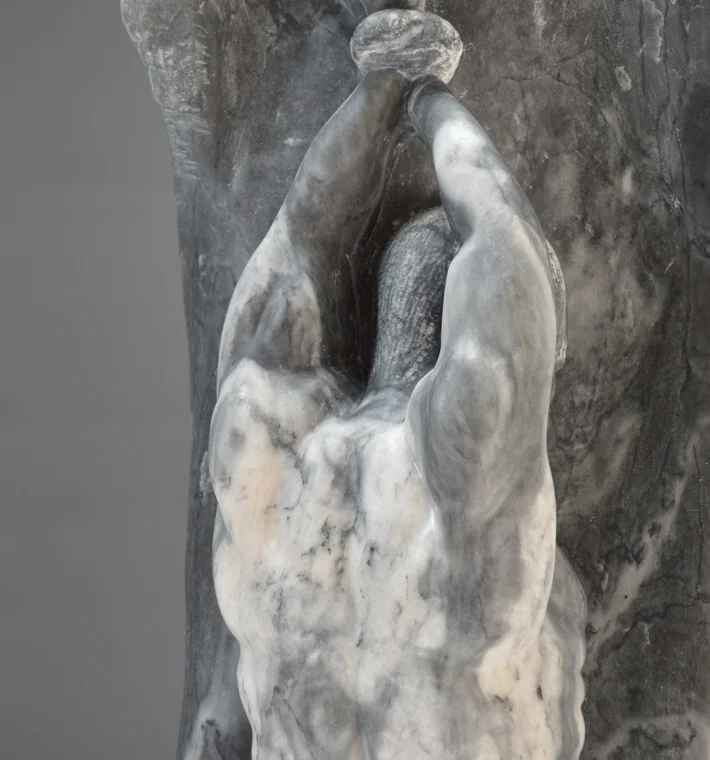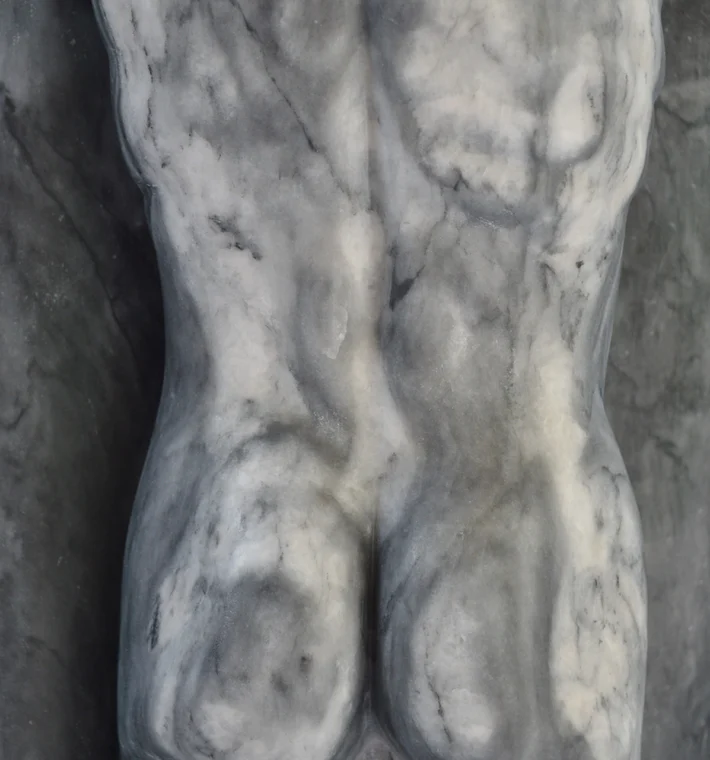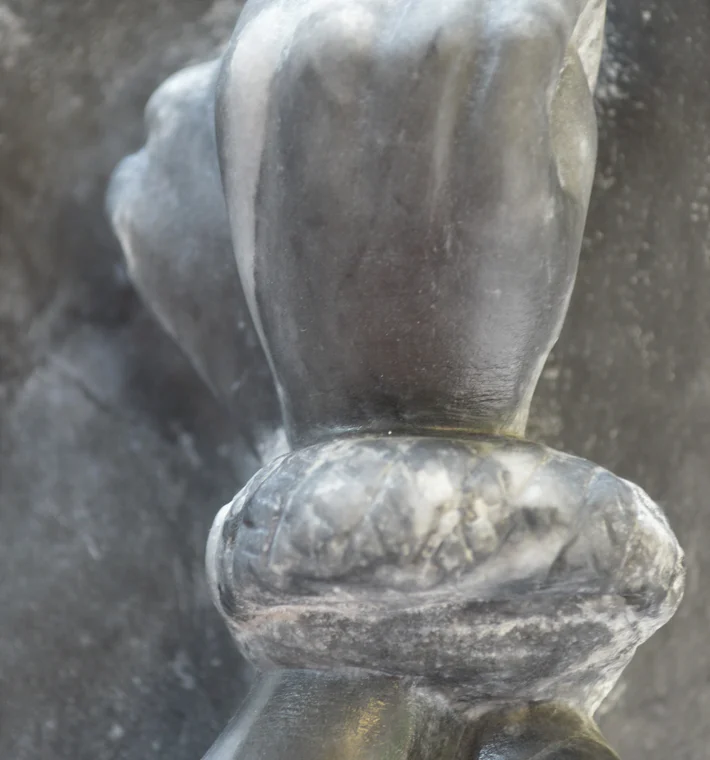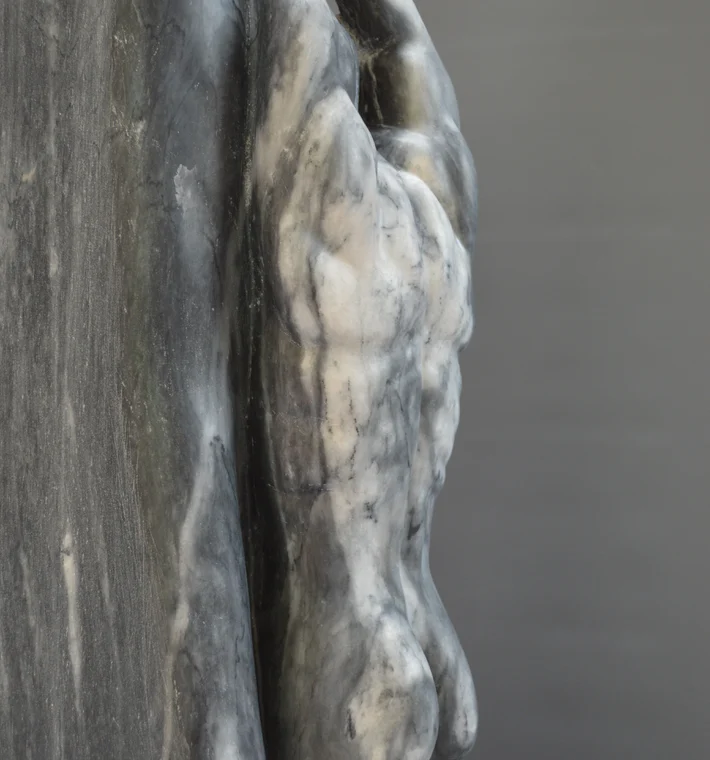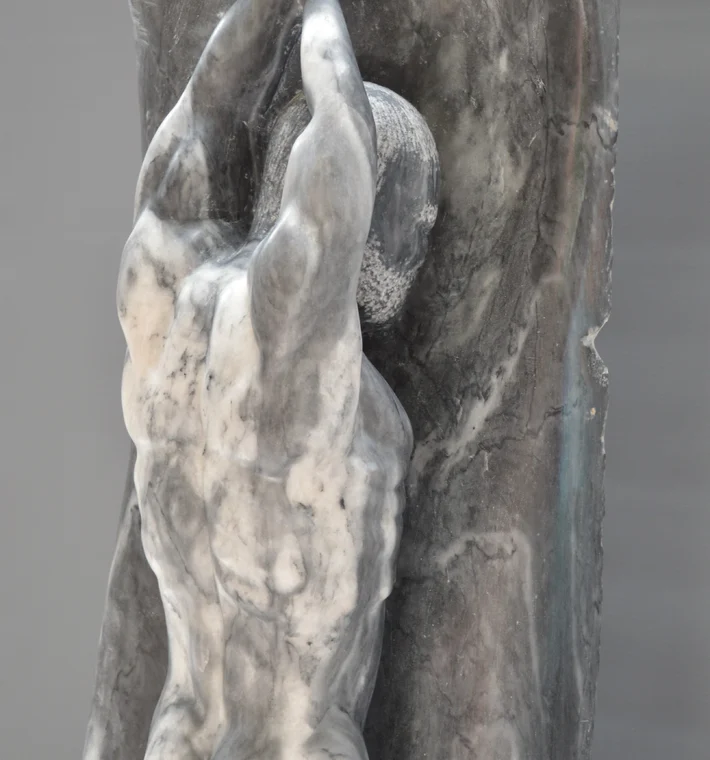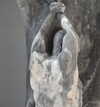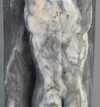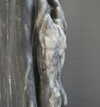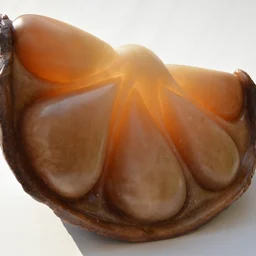Sculpture Information
When I selected this stone, I could see dark spectres around a white figure. I couldn’t fit the spectres into the piece so focused upon the white figure. When I carved out the figure, I found that his hands were raised as if he was being tortured! The figure is exhausted, with the different colours of the stone suggesting he is heavily bruised. His legs emerge from the raw stone as if from mud. The title is taken from Psalm 23:4 (The Psalm called The Lord is my shepherd).
Sir Malcolm Evans, the former chair of the United Nations Subcommittee for the Prevention of Torture, was instantly drawn to the sculpture which now sits in his front room. Having it in such a central place highlights the need to acknowledge that torture — which is so often hidden and ignored — is part of our lives. For those who have endured torture, the experience will always be with them. Sir Malcolm has described how ‘the book and the image in my mind have become fused’ and that the sculpture was a ‘very significant and major spur’ to make the book happen.
The Bonavero Institute of Human Rights, based at Mansfield College, Oxford University launched the book, ‘Tackling Torture: Prevention in Practice’ by Malcolm Evans. I was invited to attend this launch, and they kindly showed the video about the sculpture.
Between January 2009 and May 2013, Amnesty International received reports of torture in 141 countries (including Guantanamo). According to the United Nations Article 5 of the Universal declaration of human rights states, ‘No-one should be subjected to torture or to cruel, inhuman or degrading treatment or punishment.
The UN convention against torture came into force on 26th June 1987. It requires countries to take active steps to prevent torture and declares ‘No exceptional circumstances whatsoever whether a state of war or the threat of war, internal political instability or any other public emergency, may be invoked as a justification for torture.‘ Yet many countries (too many to list) — North Korea being the main offender — still use dehumanising torture for those of different religion, ethnicity or political beliefs.


